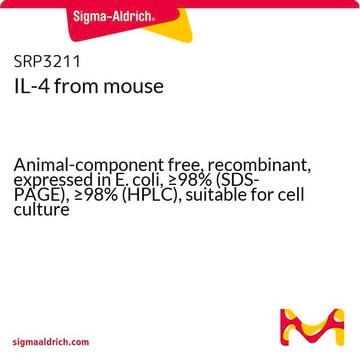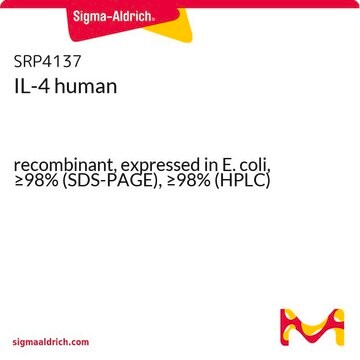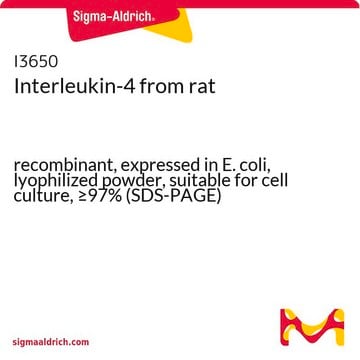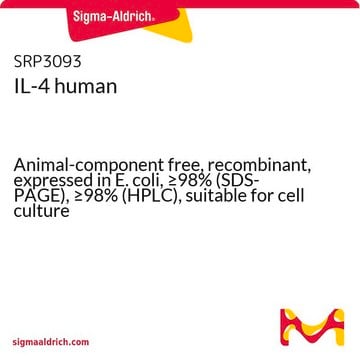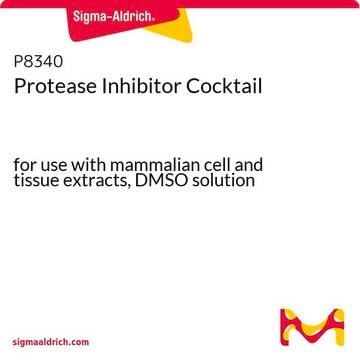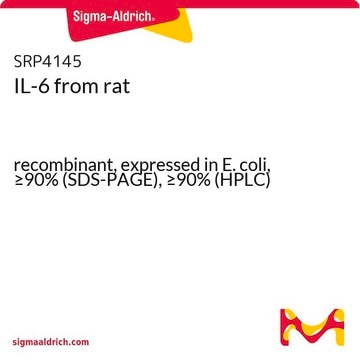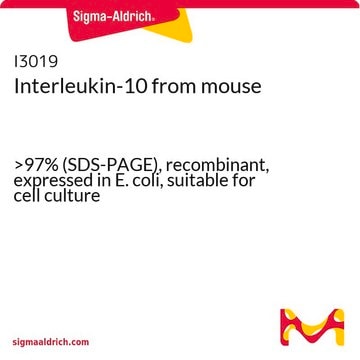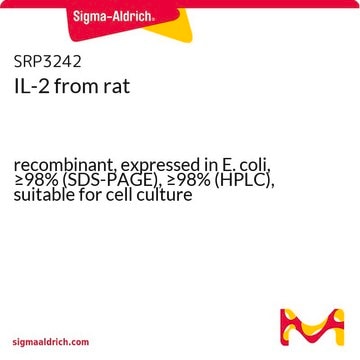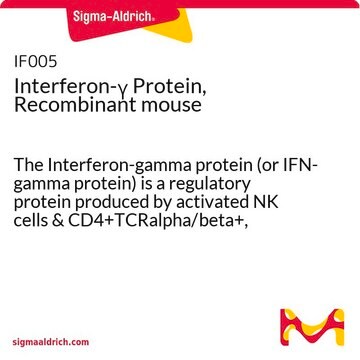I1020
IL-4 mouse
≥98% (SDS-PAGE), recombinant, expressed in E. coli, lyophilized powder, suitable for cell culture
Synonym(s):
Interleukin-4, mIL-4, Interleukin-4 human
About This Item
Recommended Products
Product Name
Interleukin-4 from mouse, IL-4, recombinant, expressed in E. coli, lyophilized powder, suitable for cell culture
biological source
mouse
recombinant
expressed in E. coli
Assay
≥98% (SDS-PAGE)
form
lyophilized powder
potency
0.1-2.0 ng/mL ED50/EC50
quality
endotoxin tested
mol wt
~13.5 kDa
packaging
pkg of 5 μg
technique(s)
cell culture | mammalian: suitable
impurities
<0.1 EU/μg
UniProt accession no.
storage temp.
−20°C
Gene Information
mouse ... Il4(16189)
Application
- as a component of cell culture media for class switch recombination assay
- to study its therapeutic benefits for mucosal healing
- as a pioglitazone or new peroxisome proliferator-activated receptor agonist (GQ-11)
Biochem/physiol Actions
Physical form
Analysis Note
Storage Class Code
11 - Combustible Solids
WGK
WGK 2
Flash Point(F)
Not applicable
Flash Point(C)
Not applicable
Personal Protective Equipment
Choose from one of the most recent versions:
Already Own This Product?
Find documentation for the products that you have recently purchased in the Document Library.
Customers Also Viewed
Articles
Interleukins, released from leukocytes, include IL-1β playing crucial roles in inflammation, immune responses, and anti-tumor immunity.
Interleukins, released from leukocytes, include IL-1β playing crucial roles in inflammation, immune responses, and anti-tumor immunity.
Interleukins, released from leukocytes, include IL-1β playing crucial roles in inflammation, immune responses, and anti-tumor immunity.
Interleukins, released from leukocytes, include IL-1β playing crucial roles in inflammation, immune responses, and anti-tumor immunity.
Our team of scientists has experience in all areas of research including Life Science, Material Science, Chemical Synthesis, Chromatography, Analytical and many others.
Contact Technical Service